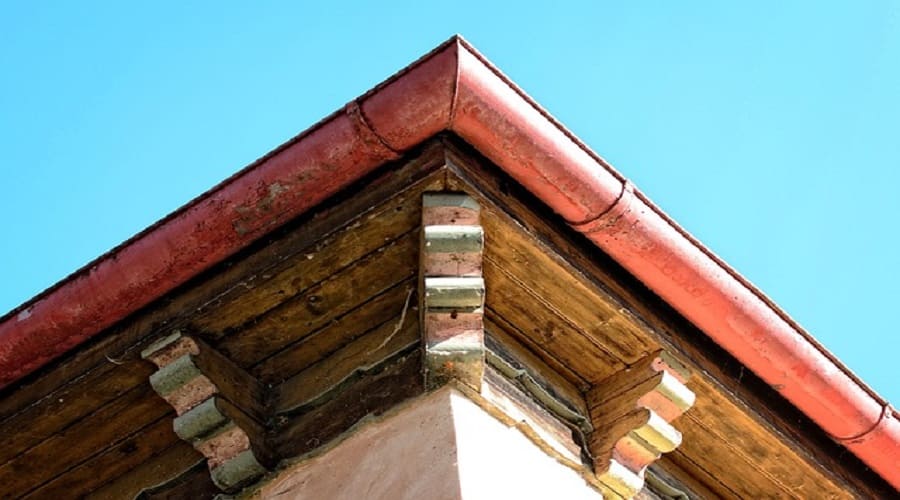When it comes to roofing systems, metal roofs are gaining popularity for their durability, longevity, and aesthetic appeal. However, the effectiveness of a metal roof is not solely dependent on the roofing material itself; the accessories.
Such as gutter systems, play a crucial role in ensuring proper drainage and protection against water damage. In this article, we will explore the importance of gutters for metal roofs and discuss various gutter systems designed specifically for these robust roofing structures.
Importance of Gutters for Metal Roofs
Metal roofs are known for their ability to shed water efficiently. However, without a proper gutter system in place, rainwater can cascade off the roof, leading to erosion around the foundation, soil displacement, and potential water damage.
Preserving Structural Integrity:
Metal roofs are designed to withstand harsh weather conditions, but without proper drainage, rainwater can accumulate and compromise the structural integrity of your property. Gutters play a vital role in directing water away from the roof, preventing potential damage.
Preventing Corrosion:
Metal roofs are susceptible to corrosion if exposed to excessive moisture. Gutters channel rainwater away, reducing the risk of water pooling on the roof and preventing corrosion that could affect the longevity of your metal roofing.
Protecting the Foundation:
Efficient gutter systems ensure that rainwater is directed away from the foundation of your home or building. This is crucial for preventing soil erosion and potential
Factors to Consider When Choosing gutter systems for metal roofs
-
Material Compatibility:
Different metals can react with each other, leading to corrosion. It’s crucial to choose gutters made from materials compatible with the metal roof to avoid such issues.
-
Durability
Metal roofs are known for their longevity, and the same should be expected from the gutter system. Opt for gutters made from durable materials like aluminum, steel, or copper.
-
Style and Aesthetics
Gutters contribute to the overall appearance of a building. Consider the architectural style and color scheme when selecting gutters to ensure they complement the metal roof and enhance the curb appeal.
-
Size and Capacity
The size of the gutter and downspouts should be sufficient to handle the volume of water expected in your area during heavy rainfall. This ensures efficient water drainage and minimizes the risk of overflow.
Types of gutters for metal roofing
-
K-Style Gutters
These gutters are popular for their decorative shape, resembling the letter “K.” K-style gutters work well with various roofing materials, including metal, and are available in different sizes to accommodate different water flow needs.
-
Half-Round Gutters
Known for their classic and elegant appearance, half-round gutters are often chosen for historic or high-end homes. They are compatible with metal roofs and provide efficient water drainage.
-
Box Gutters
Box gutters are integrated into the building’s structure, often placed between roof lines. They are a seamless option that complements the clean lines of metal roofs, offering a sleek and modern aesthetic.
-
Seamless Gutters
Seamless gutters are custom-made on-site to fit the specific dimensions of the roof. These gutters have fewer joints, reducing the risk of leaks and enhancing the overall effectiveness of the drainage system.
Installation Tips for gutters on metal roof
- Assessment and Planning:
Before installation, conduct a thorough assessment of your roof to determine the best gutter system for your specific needs. Consider factors such as roof slope, local climate, and the overall design of your property.
- Selecting the Right Material:
Choose gutter materials that complement the longevity of your metal roof. Aluminum and steel are popular choices for their durability and resistance to corrosion, ensuring a long-lasting gutter system.
- Proper Pitch and Slope:
Metal roofs often have a steeper slope, requiring careful consideration of the gutter pitch. Ensure that the gutters are installed with the appropriate slope to facilitate proper water flow and prevent debris accumulation.
- Seamless Installation:
To prevent leaks and ensure optimal functionality, opt for professional installation of seamless gutters. Properly sealed joints and a precise fit contribute to the effectiveness of the gutter system on a metal roof.
- Regular Maintenance:
Once installed, ongoing maintenance is crucial for the longevity of both your metal roof and gutter system. Regularly clean gutters, remove debris, and inspect for any signs of damage to ensure they continue to function optimally.
Maintenance and Care for Gutters on Metal Roofs
- Regular Cleaning:
Clean gutters at least twice a year to remove leaves, twigs, and other debris that can obstruct water flow. This is crucial for preventing clogs and ensuring optimal performance.
- Inspect for Corrosion:
Periodically inspect the gutters for signs of corrosion, especially if they are made from a different metal than the roofing material. Address any corrosion promptly to prevent further damage.
- Check for Leaks:
Inspect the gutters for leaks and repair any damaged sections immediately. Leaks can lead to water seepage into the building, causing structural damage over time.
Conclusion
In conclusion, selecting the right gutters for metal roofs is a critical aspect of maintaining the integrity and longevity of your property. By considering factors such as material compatibility, durability, and aesthetics, and choosing from various gutter styles, you can enhance the performance and visual appeal of your metal roofing system.
Additionally, proper installation, regular maintenance, and timely repairs are essential steps to ensure the effectiveness of the gutter system and protect your investment in a durable metal roof.

